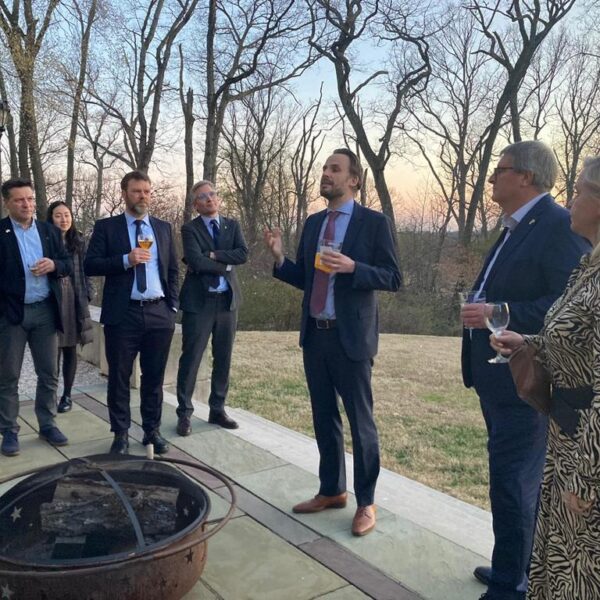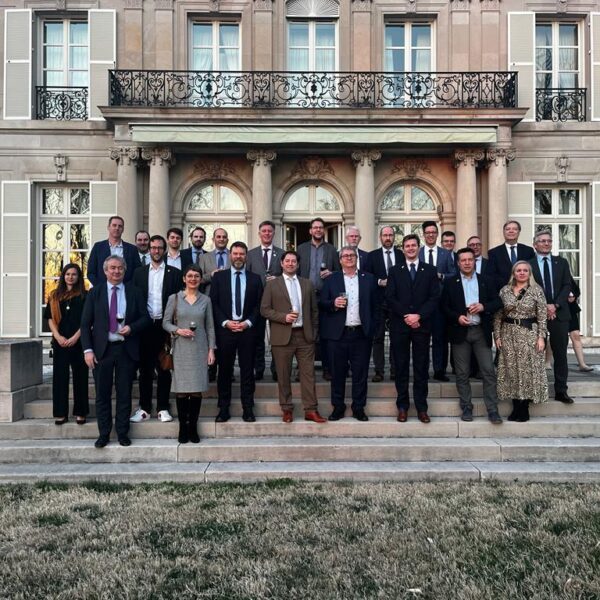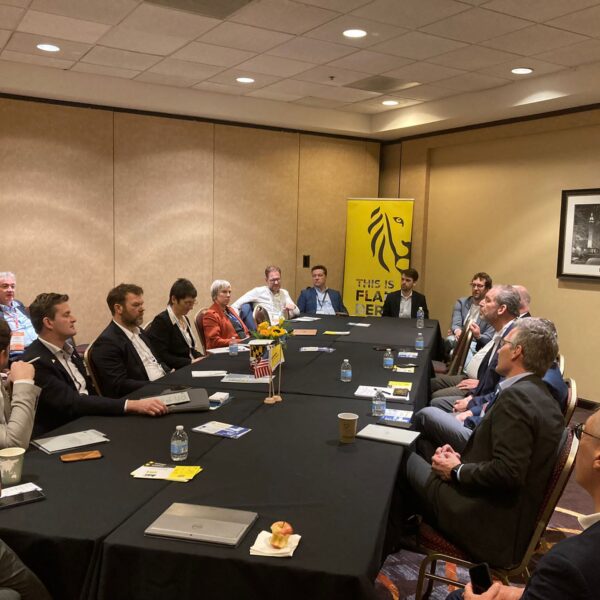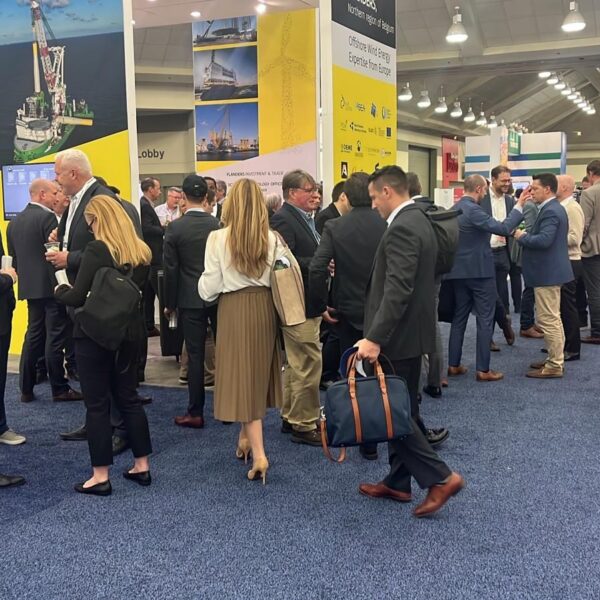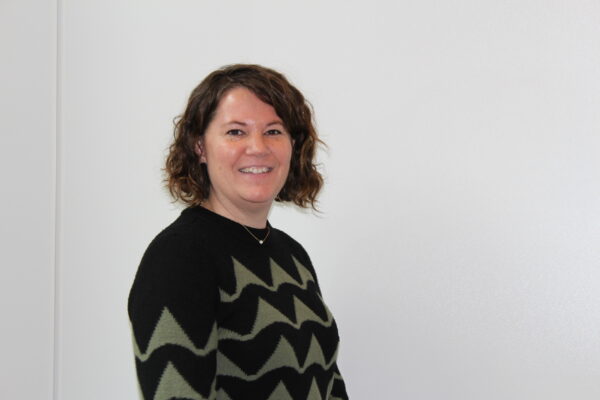Offshore wind in the US: booming business
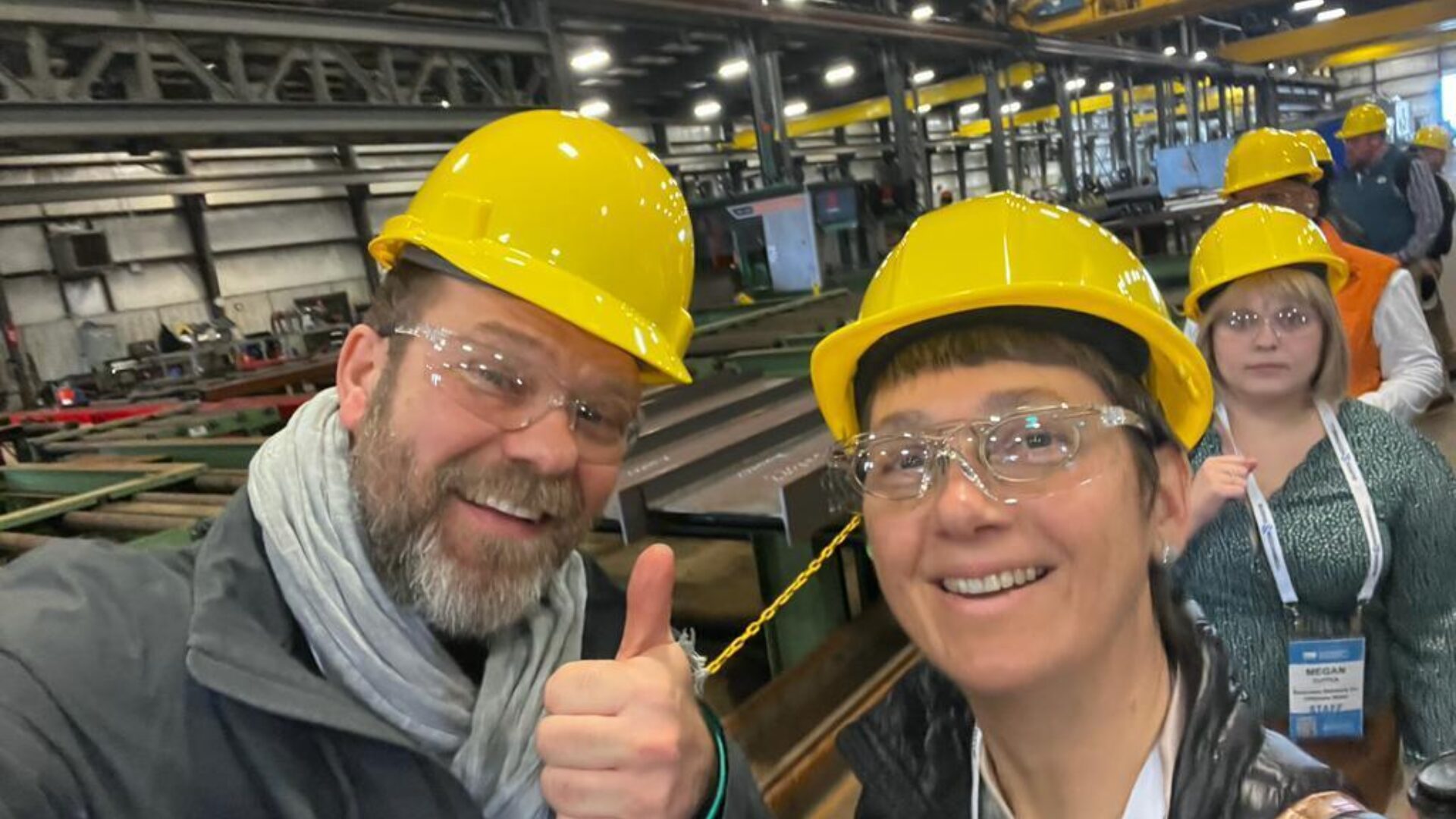
A prime role for MULTI.engineering in US offshore wind
Last month Niko Fierens, Maritime & Offshore Director, took part in 2023 IPF, the offshore wind networking event in Baltimore. There, the US objectives in the field of offshore wind farms were once again confirmed. "The plans are very ambitious", says Niko, "and offer great potential for European companies such as MULTI.engineering…"
The United States wants to install 30 GW of offshore wind capacity by 2030. In concrete terms, these sky-high ambitions mean achieving 50% of what has been created over the past thirty years, in just seven years.
Flanders Offshore Wind: helping the US to rule the waves
"It will be a huge challenge," says Niko. "Unlike Europe, the US has hardly built up any expertise. Last year at a trade fair in San Francisco, the speakers were still convinced that they would soon become number one, but now they have toned down their message. It's clear that the US will desperately need the offshore wind know-how that Europe has built up over the past thirty years.
The Americans do not have the knowledge, nor the necessary production capacity for turbines and foundations, nor ports large and deep enough to build the installations, not to mention the supply chain necessary to get these colossal constructions out to sea. Companies such as DEME, Jan De Nul and Smulders are therefore being welcomed with open arms in the US. Belgian companies in particular are absolutely leading the market for the installation of wind turbines at sea.
The Belgian embassy in Washington DC is also very aware of how useful our offshore wind expertise can be in the US. The democratic congressman for Massachusetts who welcomed the Flemish delegation during the trip, is also making efforts to highlight the importance of offshore wind."
Phase 2: Floating offshore wind
Initially, the focus in the US will be on the creation of 30 GW capacity via bottom-fixed monopiles, mainly on the East Coast. But after that, the Americans will also have to make the shift to floating turbines. "On the East Coast, people will eventually have to build further out from the shoreline. And on the West Coast, with economic clusters in states such as Washington, Oregon and California, there are hardly any shallow water locations suitable for permanent structures anyway. Finally, in the Gulf of Mexico, where bottom-fixed turbines are theoretically possible, close to the coast there's either insufficient wind or risk of hurricane conditions. It is therefore expected that floating turbines will eventually be placed deeper into the sea in this region as well. The American manufacturing facilities, ports and supply chains are also not prepared for these floating installations, which are even larger than the fixed monopiles."
Opportunities for the Moray Base floater
Niko is convinced that the floating Moray Base technology, developed by Maridea and MULTI.engineering, offers the ideal solution. Wet storage is possible for many primary components of our floater. In addition, the parts can usually be assembled while floating. The floater we have developed also has a shallower draught than other models, which means it can be built in relatively shallow harbours."
Maritime and offshore engineering know-how available
In addition to the potential for the Moray Base floater, Niko also sees opportunities in the US for MULTI.engineering to make the most of its 27-year experience in maritime and offshore engineering in the context of installation and maintenance vessels, crane vessels, tugboats, jack-ups, barges, etc. that the US will have to build at a record pace. "Even if there were enough ships and offshore experts available worldwide, putting them in the US is not an option. That's on account of the Jones Act of 1920. That law dictates that maritime freight transport between U.S. ports may only occur with U.S.-built ships with U.S. crews."
American partner wanted
MULTI.engineering is therefore actively looking for an American partner to offer its services in the US to the builders and operators of the future offshore wind fleets. Niko: "During our visit to the US, we made good use of the services of the Flanders Investment & Trade Agency to make the first contacts. I also visited a shipyard and a harbour in Boston to see the facilities there. And I spoke with a developer about a possible collaboration for the Moray Base floater."
Challenging American context
Once a foothold has been established in the US, MULTI.engineering, like other European offshore wind companies, will have to take into account a number of other factors that make the context for cooperation complex. "You have to consider the strong position of the trade unions, which organise all labour and training in some states. Or the indigenous peoples who have certain rights in some offshore locations. And of course, there are also organisations concerned about the impact on the environment – including whale populations – and on tourism. Just like here in Knokke, some people in the US would rather not see wind farms appear off their coast. It will therefore be quite a balancing act to take all stakeholders into account. But we are ready to take on that challenge with great enthusiasm."
To be continued, no doubt…
NICE ANECDOTE
While in Baltimore for the offshore wind event, Niko spotted the Mister Trash Wheel during a tour. "It was one of our sources of inspiration for the design of our own DEMARC
installation that collects plastic waste from rivers. It was cool to see the original installation in real life."
MULTI.engineering can play a significant role in the ambitious plans in the US for offshore wind with the Moray Base floater and its 27 years of maritime & offshore know-how.

